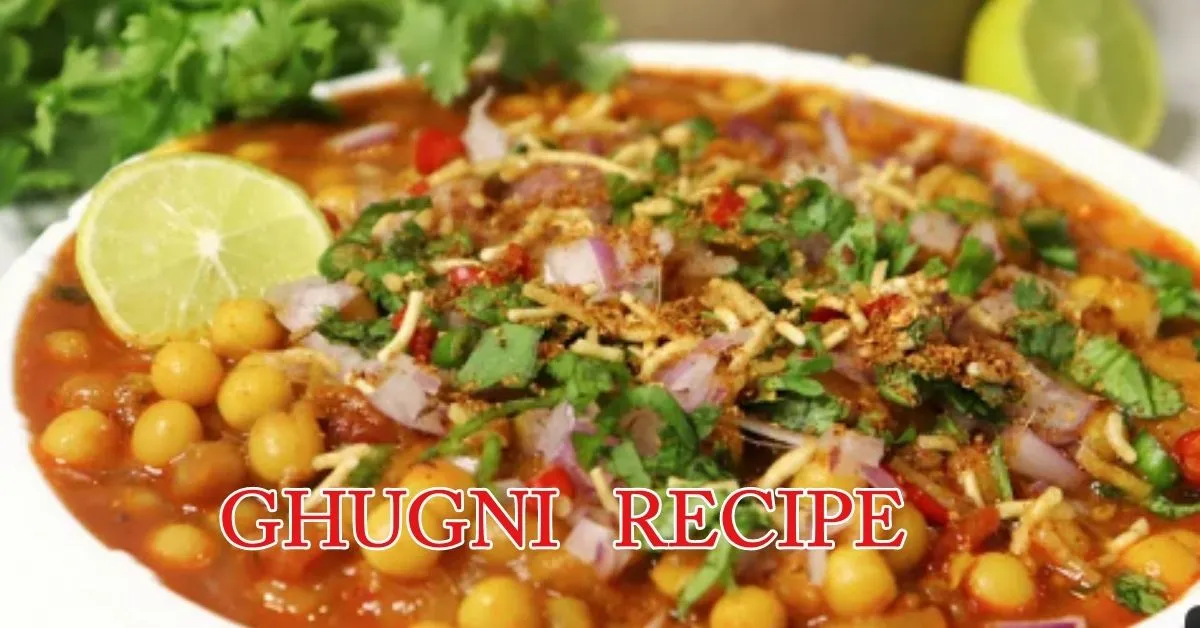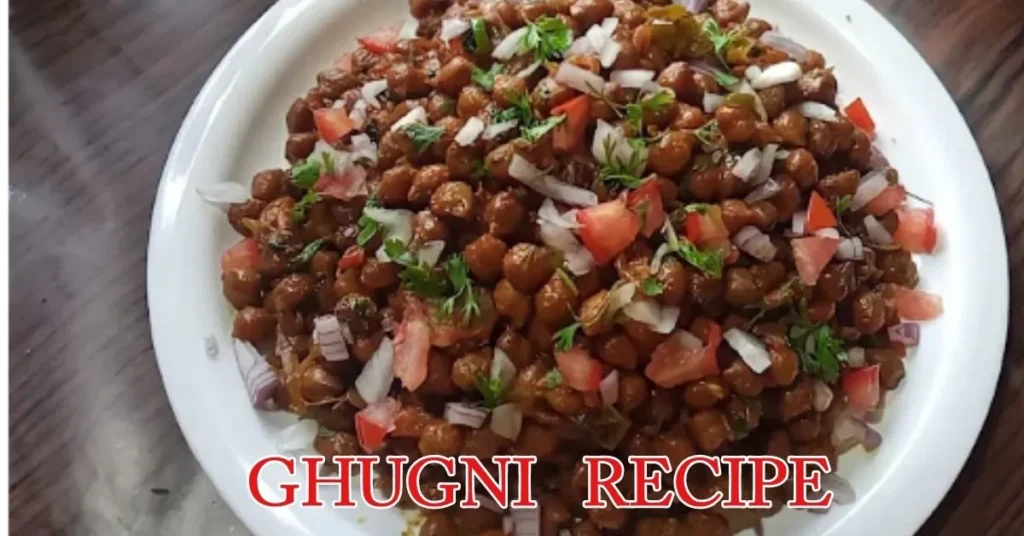In the landscape of traditional Indian treats, Ghugni Recipe distinctly differentiates itself through its alluring aroma and satisfying crunch. This cherished dish, born in the eastern districts of India, delightfully combines the art of cooking dried yellow peas in a lip-smacking and tangy sauce. Ghugni is a trendy snack due to its irresistible taste and valuable nutrients, making it enjoyed by everyone across various age brackets. In this piece, we will walk you through the detailed instructions required to create this mouthwatering treat that will leave you pining for additional servings.
The Origin of Ghugni Recipe
Ghugni’s history, deeply entwined with the eastern part of India, has shaped its mouthwatering food traditions. It is thought to have emerged from West Bengal, where it is frequently cooked on celebratory occasions. With time, Ghugni Recipe appeal expanded, giving rise to distinct interpretations of the recipe throughout India. Today, Ghugni is revered by international gastronomy aficionados and not solely within India.
The Nutritional Benefits of Ghugni
Ghugni is not merely a tasty morsel but also a wholesome choice. Dried yellow peas, a key element in Ghugni, provide a rich supply of plant-based protein, fiber, and nutritious compounds. Sprinkling seasonings and culinary components can amplify the nutritional value of a dish, rendering it an excellent choice for individuals with a penchant for savory and beneficial treats.
Ingredients You’ll Need
Before we dive into the cooking process, let’s gather all the ingredients required for preparing the Ghugni Recipe
● Dried yellow peas: 1 cup
● Cooking oil: 2 tablespoons
● Onion: 1 large (finely chopped)
● Tomatoes: 2 medium-sized (finely chopped)
● Ginger-garlic paste: 1 tablespoon
● Green chilies: 2 (slit)
● Turmeric powder: 1/2 teaspoon
● Red chili powder: 1 teaspoon
● Cumin powder: 1 teaspoon
● Coriander powder: 1 teaspoon
● Garam masala: 1/2 teaspoon
● Salt: to taste
● Fresh coriander leaves: for garnish
● Tamarind pulp: 2 tablespoons
● Water: 2 cups
Step-by-Step Cooking Instructions
Soaking the Yellow Peas
Begin the pea preparation process by giving them a refreshing cold water rinse. Into a spacious bowl, pour the peas and adequate water to submerge them entirely. Foster an environment where they may steep for a considerable time, 6-8 hours or a whole night. The soaking process facilitates the mellowing of the peas, thus shortening their preparation duration.
Cooking the Yellow Peas
Following immersion, remove the water from the yellow peas and rinse them again. Move the peas into a pressure cooker and increase the liquid volume with new water. Cooking them on medium will take around 15 minutes or until they are fully prepared. Once cooked, set them aside.
Preparing the Ghugni Masala
Within a pan, warm the oil over medium heat before adding minced onions. Brown them thoroughly through a process of sautéing. After that, insert the sliced green chilies, continuing to cook for a bit longer. Add the finely chopped tomatoes now, and afterward, cook until they become smooth and fragile.
Cooking the Ghugni Gravy
Integrate turmeric, red chili, cumin, coriander, garam masala, and salt into the pan. Combine the seasonings skillfully with the cooked masala. Afterward, combine the boiled yellow peas and tamarind paste. Mixing everything allows the flavors to intermingle seamlessly.
Pour water into the pan, then stir to combine. Lower the heat and wrap the pan, then cook for 15-20 minutes. As the gravy finishes cooking, it will beautifully complement the peas’ natural flavor.
Serving Suggestions
Serving Ghugni steaming hot with newly chopped coriander leaves is the preferred method. This delectable offering can be appreciated independently or in tandem with various accompaniments. Incorporating lemon zest into the Ghugni will create a more dynamic taste experience.
Tips for the Perfect Ghugni Recipe
By subtly adding asafoetida (hing) to the oil during the tempering process, the flavor and scent of Ghugni can be significantly enhanced.
Quickly grill the Ghugni on a charcoal flame for a more complex flavor profile before serving.
Variations of the Ghugni Recipe
The versatility of Ghugni manifests itself through various regional iterations. Some popular variations include:
- Bihari Ghugni: Instead of traditional yellow peas, we use black ones.
- Odiya Ghuguni: Produced using dried peas and commonly accompanied by puffed rice (muri) during consumption.
- Assamese Ghugni: Incorporates unique local spices for a distinct flavor.
The Ghugni Recipe Culture in India
During Indian festivals like Durga Puja and Holi, Ghugni holds a particular cultural significance. Many sellers typically offer this item, and households cook it for social events and festivities. The enticing scent of Ghugni lingers in the atmosphere, eliciting bittersweet recollections from many Indians.
Conclusion
By way of recap, Ghugni Recipe combines the textures of dried yellow peas and spices to create a delicious Indian delight. The combined influence of India’s varied regions has created a cherished meal throughout the nation. So why wait? Whip up this recipe at home and relish the taste of this celebrated Indian culinary creation.
Frequently Asked Questions (FAQs)
- Could you employ canned peas instead of dried yellow peas while cooking Ghugni?
Canned peas may offer convenience, but genuine Ghugni requires dried yellow peas for optimal taste and texture. Tending to the dried legumes involves some dedication but yields superior outcomes.
- Can vegans and vegetarians enjoy the Ghugni Recipe?
As a vegetarian dish, Ghugni also meets the criteria for vegan consumption.
-
May I modify the degree of heat in your Ghugni, please?
Absolutely! Thanks to the versatility afforded by these two pivotal components, you can perfectly balance the level of warmth to your preference.
- How long can Ghugni remain refrigerated?
Ghugni can be kept in an airtight container in the fridge for approximately 2-3 days. Reheat it before serving.
-
Can I save Ghugni for later eating?
Ghugni can be kept frozen for approximately one month. Remember to thaw food evenly and gradually before reheating it.

